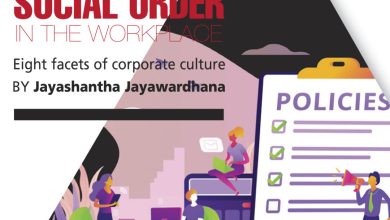CONTENT MARKETING

INSIGHTS FOR SME MARKETERS
The art of communicating with your target audience – Dr. Muneer Muhamed

The importance of content marketing for SME growth is critical to increase traffic, potential leads and a healthy sales funnel.
A typical sales cycle involves the awareness stage, where you rely on advertisements and the media; the consideration stage, where customers who are aware of your product will consider it for purchase along with competitor offerings; and the closing stage, where you entice the customer to pay and purchase.
As SME marketers, your priority in the awareness stage is to create content that addresses the major issues your target customers face. Quote your research, list the issues they face (in terms of challenges or non-availability of appropriate solutions) and prepare a detailed set of frequently asked questions (FAQs).
This will be more thought leadership in nature rather than a hard sell.
Content should cover overall challenges and how one can look at solving them. Articles, white papers, blogs, e-books, newsletters, videos, research reports and so on could be the best forms of content at this stage.
If you’re in the business of chemicals for foundries, you can publish articles or white papers on how to improve efficiency and increase output.
Or if you’re in home cleaning services, talk about how to approach dusting or cleaning in an article or a blog. You can also run a video tutorial on how germs typically grow and ways to prevent their growth.
A travel agency could compile a video on how to plan a romantic trip to a relevant destination.
There are many other businesses and examples, of course.
For customers who are considering you as part of their shortlist, the content must be different and its objective must be to entice them to choose you. So in addition to educating them as a reiteration, some hard selling must be part of the plan.
List what features and benefits the buyer should look for, and how your brand caters to them. A comparative feature chart of all products is a good idea. And subtly explain why your product is superior.
Make sure the content is focussed on the problems that customers face rather than trying to tell them about your features and add-ons. User case studies, testimonials, tips, blogs and videos will help provide good content at this stage.
For instance, if you are in event management, offer tips for organising the next annual conference for a corporate client with a list of successful events that you’ve managed in similar cases. It would be a good idea to provide a checklist for conducting a thought leadership event both live and on video.
Most companies neglect closing, which is the last stage in the sales process. Content marketing can play a major role here. Focus on why your offering is the best choice for potential customers rather than how good you are.
Talk about the expertise you bring to resolving teething issues, after sales service, and the experience and knowledge you possess. Create product use videos, user interviews, value capture cases and more.
As an example, a new health clinic has promised that appointments will take place at the specified times, doctors will spend 10-15 minutes with each patient and this will minimise tests, which are prescribed by most clinics.
As SME marketers, you should begin this journey in content marketing with a view to managing it well and not sporadically. Here are some tips to get you started.
IDENTIFY Plan your target customer segment first. Don’t use a one-size-fits-all strategy. The content has to be specific to one segment or even a niche audience.
If you have various segments with different value propositions, begin with one or two and develop content. Otherwise, you won’t be able to sustain the marketing process.
EVALUATE Consider different templates and choose the ones you’re aligned with. The stages of the sales cycle require different formats and templates. This also depends on what form you want to deliver your content in to achieve the best impact – e.g. articles, videos, blogs, podcasts and so on.
Language, creativity, style, articulation and simplicity also matter when trying to create a connection with your audience. Speak at the same level as your target customers.
MESSAGE Decide on the best media to deliver your content – such as on your website, emails, flyers, social media, mobile phones and the like.
As in any media decisions, look at where your target segment is likely to see your message. Third party articles and research may well be sent via email. Video links could be sent on WhatsApp.
PLAN Don’t be too ambitious at the beginning. Start with a schedule that you can adhere to, from creating content to promoting it.
Plan monthly or quarterly communications, and ensure that you don’t launch your campaign without a year’s content planned and ready to go. If your business cannot generate sufficient content, then reduce the frequency.
Plan your target customer segment





